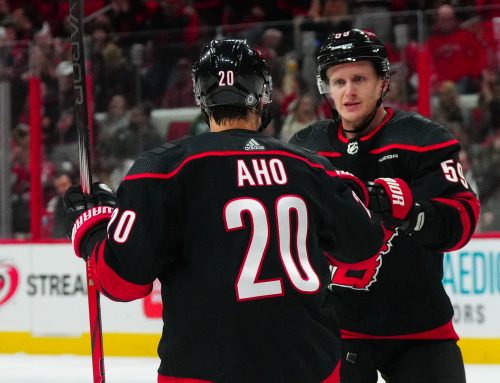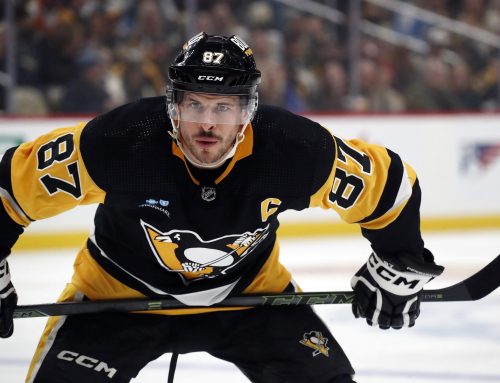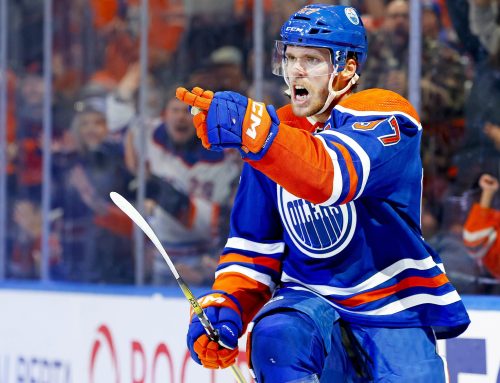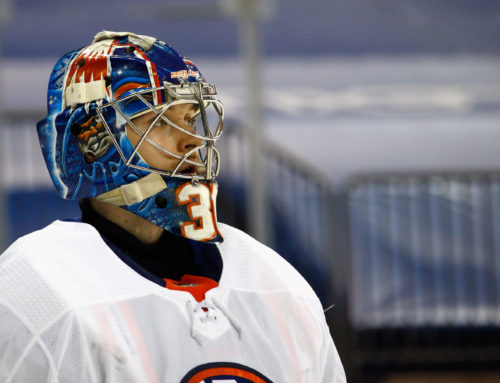Top 10 Time-On-Ice Decreases
Tom Collins
2021-05-03
"It’s better to finish at the peak or soon after it, than to wait until the audience notices a decline."
This quote comes from German composer and double bassist Eberhard Weber. I'm pretty sure he was referring to playing music, but he very well could have been talking about rostering players in fantasy hockey.
All too often, fantasy general managers will hold onto a player too long, expecting the recent decline in play to reverse. One of the big reasons for a decline in production can be linked to a decline in ice time. That decline in ice time could be part of a bigger trend, or the start of a trend, which means if you're holding on to older players, you may need to sell high if you can.
Last week, we looked at the top 10 players who have seen a significant increase in ice time. I believe the decrease in ice time should be more relevant for fantasy general managers. You need to be aware that these players are in a more unfavorable situation.
Below are 10 players who have seen a big decrease in ice time this season. Most of the players are averaging at least two fewer minutes per night than they were last year.
10. Zach Parise
As Minnesota is finally giving ice time to their young players, it will be tough for Parise to bounce back as there's not as much space in the top-six as there once was. That's why his ice time has dropped from 17:12 a year ago to 14:12 this season. Making it worse is that his ice time has been dwindling as the season moves along. Parise averaged 17:57 per game in the first 11 contests to 10:52 in the past 10 games. His demotion to the second power-play unit is a big reason why his power-play production has dropped from 18 points last year to only two this season.
I tend to shy away from Kuznetsov in fantasy leagues because I don't know how to properly evaluate him. Is he a guy who can consistently flirt with almost a point-per-game? Is he more of a 60-70-point player who will occasionally flirt with a point-per-game? Can I draft him high and have confidence that he'll be worth the draft pick? I can never figure it out, and based on his spot in the lineup, neither can the Capitals. Kuznetsov's ice time has dropped from 18:47 two years ago to 17:51 last year to 16:34 this year. At the same time, his power-play usage has also dipped. He's gone from being on the power play for 74 per cent of Washington's power-play minutes two seasons ago to 60.6 per cent last year to 54.6 per cent this season.
Edler's decline in ice time can be summed up in two words: Quinn Hughes. Two seasons ago, Edler averaged 3:07 per night with the man advantage. Last season, that dropped to 1:11 per night, and this year, he averaged three seconds per game on the power play. In the same timeframe, his overall ice time dropped from 24:34 to 22:37 to 20:32. The addition of Hughes has also led to fewer offensive zone starts for Edler. All this has caused Edler's production to crater. Once a player that would put up a 40-point pace, including a 46-point pace last season, he's seen his production drop this year to six points in 42 games (a 12-point pace). Luckily, he still has some value in fantasy, with an 82-game pace of 156 shots, 134 hits and 178 blocked shots.
7. Kyle Connor
Although you might be frustrated with Connor's production lately (one point in his last six games), since the start of the 2017-18 season, Connor ranks eighth in goals among all players. That's why a quick look at his ice time might bring a little surprise that it's down so much. He's gone from 21:05 a year ago to 18:37 per game this year. However, looking a little deeper brings about the reason. The big difference is with penalty killing. A year ago, he averaged over a minute of shorthanded time per game. This year, he's averaging six seconds. Add in a tiny decrease in power-play time per game of 20 seconds, and a big chunk of his reduction in overall ice time is accounted for.
I wanted to include Neal Pionk here, but I decided to limit the Jets on this list to two. When Dubois said he wanted out of Columbus, everyone thought whichever team acquired him would be getting a number one centre. Instead, he's been producing more as a third-liner, on pace for 43 points over an 82-game season. Paul Stastny, Mason Appleton and Andrew Copp are contributing more, which is not what you want from your supposedly number one centre. His ice time has dropped from almost 18 minutes a night with Columbus last year to 15:15 per game this season. Part of that is the power-play usage, where he's on the second unit.
5. Max Domi
Much has been written about Domi already. There's his quick fall from 71 points in 2018-19 to a 36-point pace this year, his ugly minus-16 is the worst of his career, he's taking fewer than two shots per game, he's not hitting anyone, and he's not taking faceoffs, which hurts if you're using him in the centre position in a league that counts faceoff wins. His ice time has dropped from 17:06 last year to 15:05 this season. It will be interesting to see what happens next year if either Columbus has a new coach or if Domi is traded somewhere else. One of my favourite features of this site is the ability to compare players over a certain period. If you compare Josh Anderson to Domi over the past three months, they're nearly identical:
Anderson: 39 games, 19 points, one power-play goal, two power-play points, 92 shots, minus-seven, 28 PIM, 104 hits
Domi: 41 games, 19 points, one power-play goal, two power-play points, 74 shots, minus-11, 69 PIM, 10 hits
While Domi has a large edge in PIM and Anderson has a massive advantage in hits, one is deemed a disappointment while the other is awesome.
4. Keith Yandle
He started the season embroiled in controversy as the Panthers discussed making Yandle a healthy scratch, thereby ruining his iron man streak. That idea went quickly by the wayside after public pressure, and he's played in every game this season. However, this season saw the continuation of a trend where his ice time has steadily dropped at least two minutes per game in each of the last four seasons (from 24:29 to 22:27 to 19:42 to 17:15). That's a substantial decrease even though he's still on the top power-play unit, where he's posted 17 PPP this year. If he ever loses that spot, the 34-year-old defenseman will be averaging 15 minutes per night.
3. Ryan Suter
Suter has always been underappreciated when it comes to points-only leagues. He rarely misses a game, and, before this season, was consistently putting up a minimum of a 40-point pace, including a 57-point pace last season. Of course, he's no longer averaging 29 minutes per game, and that time on ice has decreased over the years, dropping from 26:42 a few years back to 24:38 last year to 22:13 this year. His shorthanded TOI and PP TOI haven't gone down much, so he's losing much of it at five-on-five. As proven last year, the 36-year-old can still be productive, but one of his most significant issues this year is the lack of power-play production (his six power-play points are a third of what he had a year ago).
2. Patrik Laine
We all figured Laine wouldn't get along with John Tortorella in Columbus, but the team's best goal scorer isn't getting as much ice time as you would hope. After averaging 19:25 last year in Winnipeg, he's down to 17:30 this season, which has been decreasing as the season moves along. He's had 13 games this year where his ice time has been south of 16 minutes, and his average ice time is 16:23 per night over the last 17 games. Of course, it's not like he deserves more ice time either, with only three goals over those 17 games and 12 on the season.
His loss of ice time has been a slow leak until this season. In 2013-14, he averaged almost 26 minutes a night. That slowly decreased every season until he averaged 23:01 a year ago. This year, that has dropped to 20:55. I've often said the OEL is overrated thanks to one great season. He's a consistent 40-point guy, but that's about it (to be fair, he does provide value in leagues that count hits and shots). The most important reason for his decrease in ice time essentially has to do with his teammates, and that’s not likely to change. Jakob Chychrun has surpassed OEL in both production and ice time (even though OEL has been back on the top power-play unit for the past 10 or so games). There's also Victor Soderstrom to contend with, who will be pushing for ice time and power-play time when he becomes a regular player. Unless OEL will waive his no-trade clause to go to a new team, expect his production to also start declining as well.





 WSH
WSH NYR
NYR NSH
NSH VAN
VAN COL
COL WPG
WPG L.A
L.A EDM
EDM CHI
CHI T.B
T.B CAR
CAR NYI
NYI OTT
OTT
